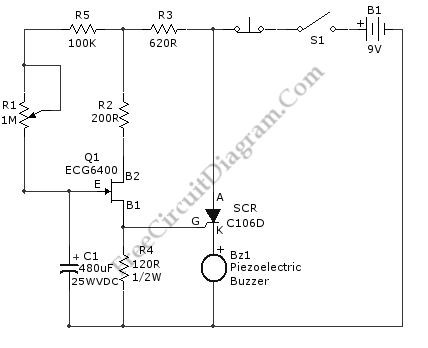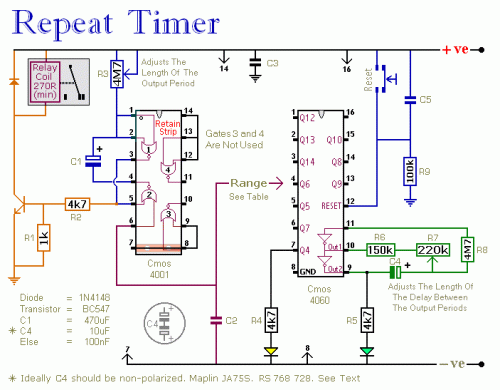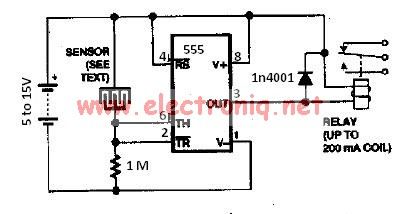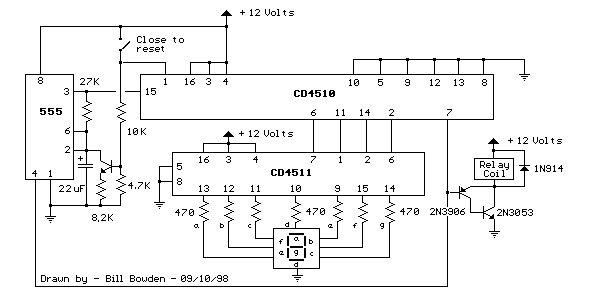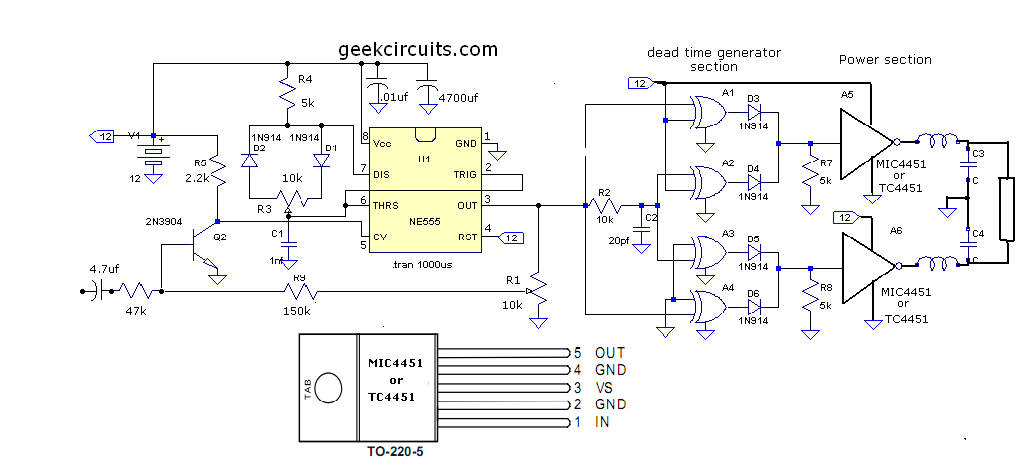
Repeating Interval Timer 2
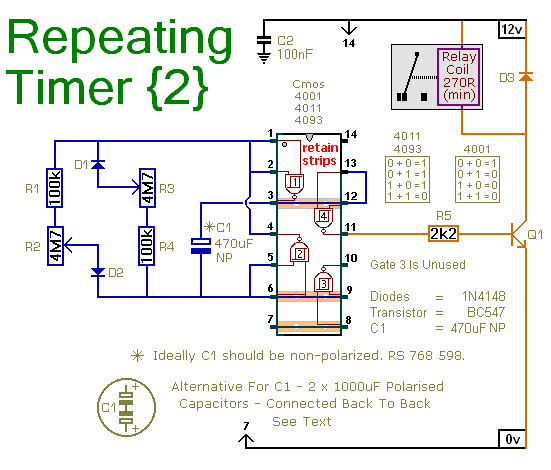
This is a simpler repeating timer circuit. It uses just one CMOS IC wired as an asymmetric oscillator. The length of time the relay remains energized and the length of time it remains de-energized are set independently.
The repeating timer circuit is designed around a single CMOS integrated circuit (IC), which operates as an asymmetric oscillator. This configuration allows for independent control over two distinct timing intervals: one for the duration the relay is energized and another for the duration it is de-energized.
The circuit typically includes a few passive components such as resistors and capacitors, which are crucial for determining the oscillation frequency and duty cycle. The timing is established by the values of these components, allowing for customization based on the application requirements.
In operation, when powered, the CMOS IC generates a square wave output that alternates between high and low states. During the high state, the relay is activated, allowing current to flow through the load connected to the relay contacts. The duration of this state is controlled by the RC time constant, which is influenced by the selected resistor and capacitor values.
Once the set time elapses, the IC switches to a low state, deactivating the relay and cutting off the current to the load. The time spent in this state is also determined by the RC time constant configured for the de-energized interval.
This timer circuit can be applied in various applications, including automatic lighting systems, irrigation systems, and other scenarios where controlled on-off cycling of a device is required. The simplicity of using a single CMOS IC makes it an efficient and cost-effective solution for timer-based control systems.This is a simpler repeating timer circuit. It uses just one Cmos IC - wired as an asymmetric oscillator. The length of time the relay remains energized - and the length of time it remains de-energized - are set independently.. 🔗 External reference
The repeating timer circuit is designed around a single CMOS integrated circuit (IC), which operates as an asymmetric oscillator. This configuration allows for independent control over two distinct timing intervals: one for the duration the relay is energized and another for the duration it is de-energized.
The circuit typically includes a few passive components such as resistors and capacitors, which are crucial for determining the oscillation frequency and duty cycle. The timing is established by the values of these components, allowing for customization based on the application requirements.
In operation, when powered, the CMOS IC generates a square wave output that alternates between high and low states. During the high state, the relay is activated, allowing current to flow through the load connected to the relay contacts. The duration of this state is controlled by the RC time constant, which is influenced by the selected resistor and capacitor values.
Once the set time elapses, the IC switches to a low state, deactivating the relay and cutting off the current to the load. The time spent in this state is also determined by the RC time constant configured for the de-energized interval.
This timer circuit can be applied in various applications, including automatic lighting systems, irrigation systems, and other scenarios where controlled on-off cycling of a device is required. The simplicity of using a single CMOS IC makes it an efficient and cost-effective solution for timer-based control systems.This is a simpler repeating timer circuit. It uses just one Cmos IC - wired as an asymmetric oscillator. The length of time the relay remains energized - and the length of time it remains de-energized - are set independently.. 🔗 External reference
Warning: include(partials/cookie-banner.php): Failed to open stream: Permission denied in /var/www/html/nextgr/view-circuit.php on line 713
Warning: include(): Failed opening 'partials/cookie-banner.php' for inclusion (include_path='.:/usr/share/php') in /var/www/html/nextgr/view-circuit.php on line 713
